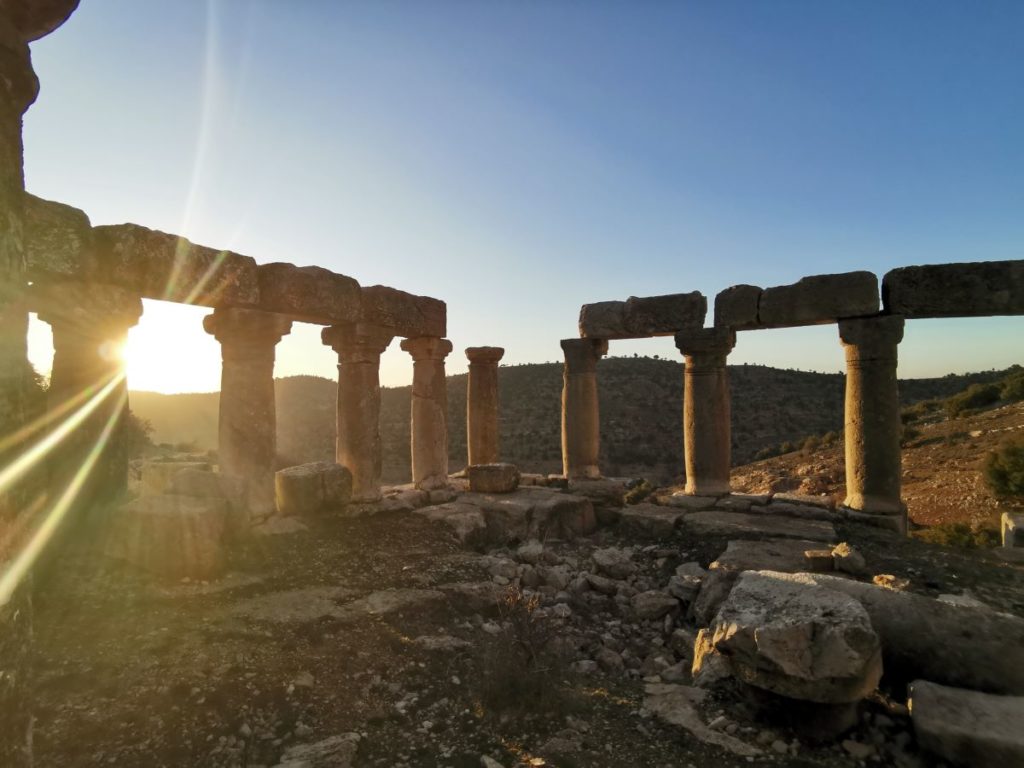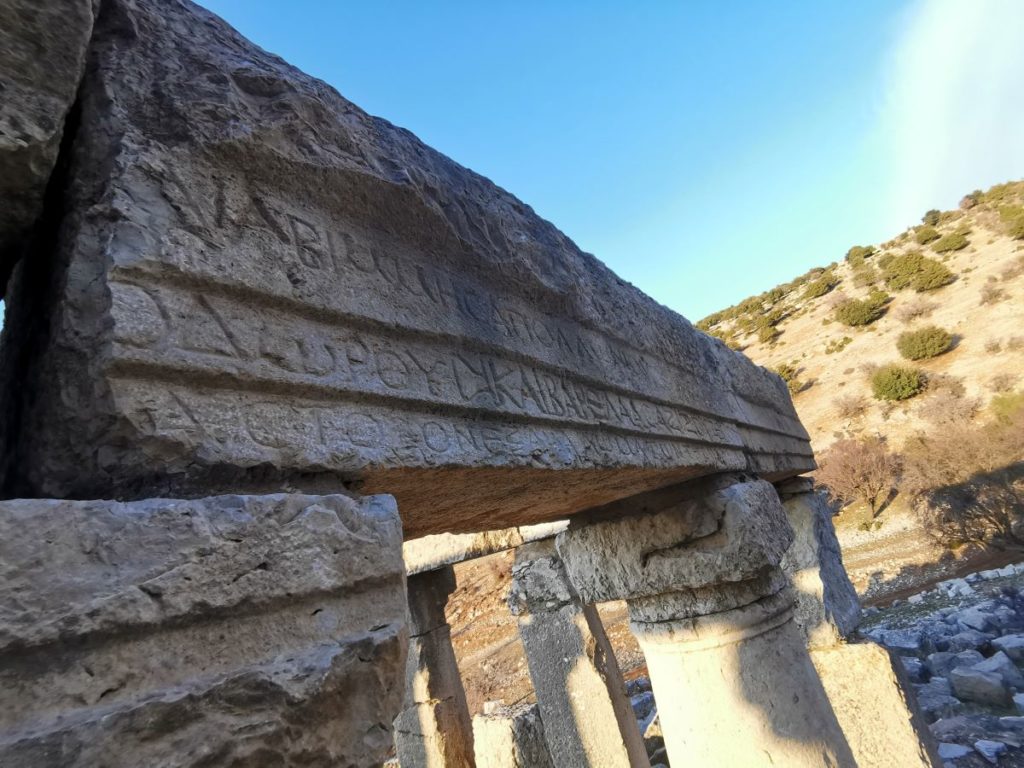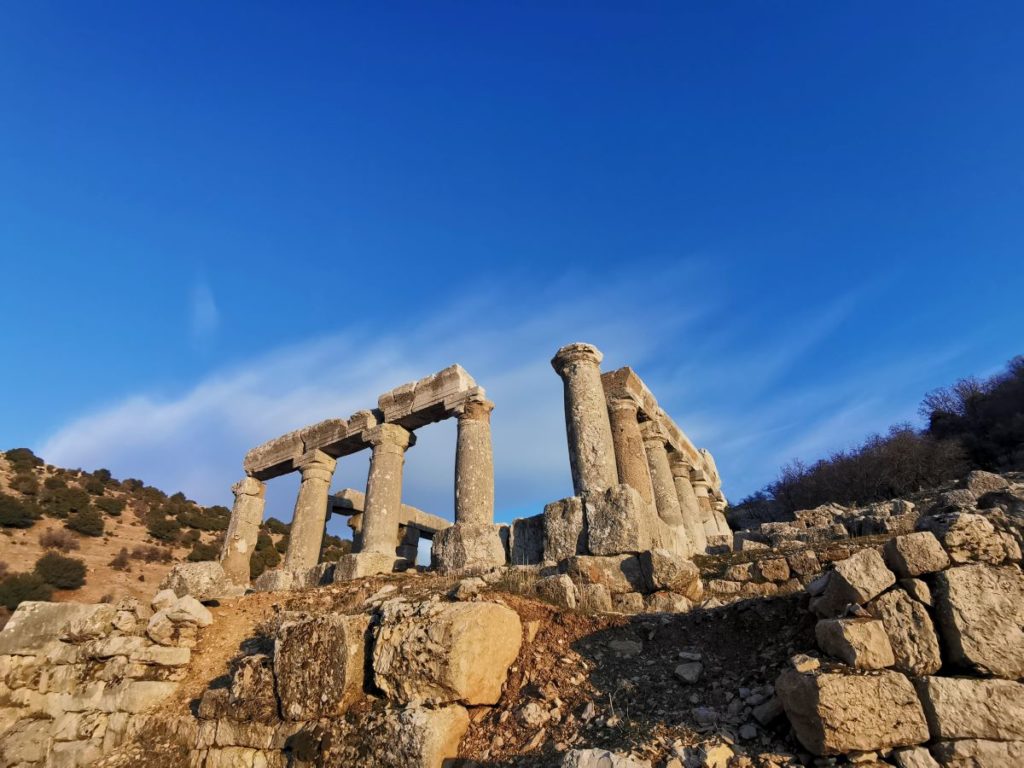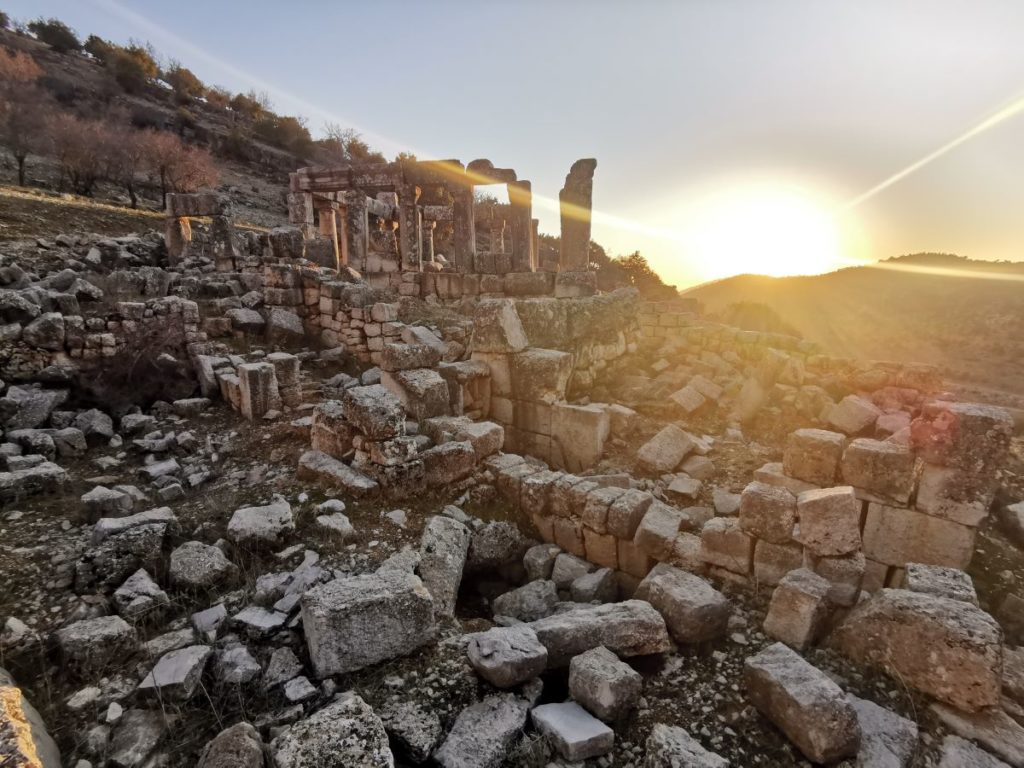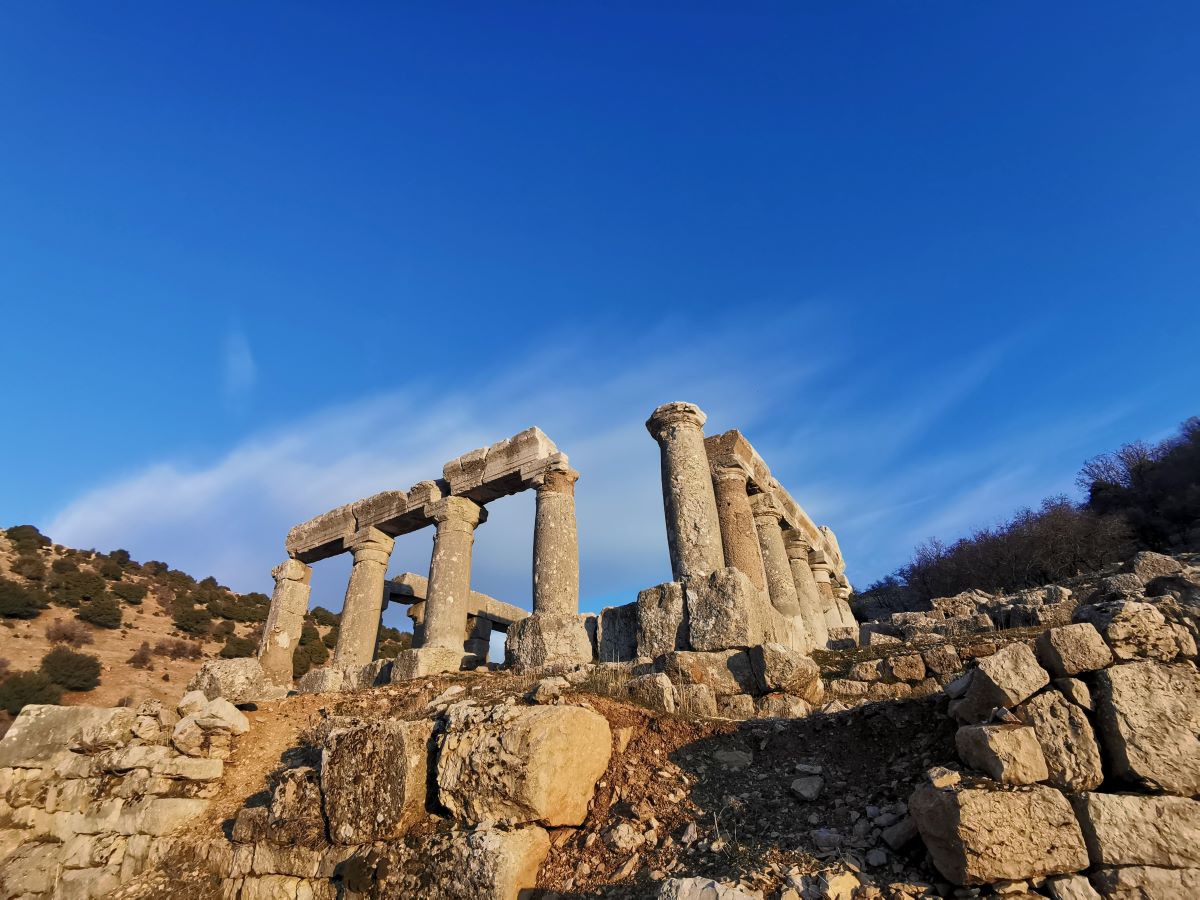The Roman sanctuary of Hammara is a unique structure nestled in the southern slope of a valley which constitutes a natural passageway between the Bekaa and the gap of the Syrian river of Barada.
Dedication
According to several architrave inscriptions, the edifice was dedicated to the God Zeus. The dedication also mentions the sponsors and builders of the temple.
Structure
The construction of the edifice took place between the end of the 3rd century AD and the beginning of the 4th century AD.
Following the Doric order, studies have shown that the temple was remodeled several times since its construction. In its current state, the temple has porticoes on 4 sides. Archeologists assume that these are porticoes bordering the courtyard of the temple, at the bottom of the peribolos (court enclosed by a wall, surrounding a sacred area).
Furthermore, Preliminary diggings have concluded that the site was transformed during the Byzantine era into a monastery.
Additional excavations would perhaps make it possible to specify more precisely the aspect of the sanctuary in Roman times and the stages of its transformation since the end of antiquity.
Karim Sokhn
Tour Operator & Tour Guide
References:
La Vie Religieuse Au Liban Sous L’Empire Romain – Julien Aliquo
